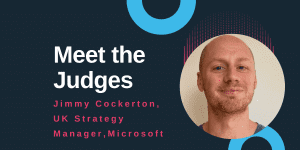Pulling back the curtain on blockchain.

When Alice followed the yellow brick road to find the Wizard of Oz, she was disappointed to pull back the curtain and reveal the ordinary. The classic novel created by American Author L. Frank Baum in 1900’s has parallels in today’s digital transformation. Businesses have been increasingly focusing on sustainability and ESG goals over the last few years and while this is a step in the right direction, it’s not without criticism.
Also known as Greenwashing – the term used to describe entities that look green on the outside but are anything but on the inside – has rapidly become common practice as companies seek to deliver immediate response to demands from the financial community to allocate capital to business operations with a positive impact on the environment. Or at least not a negative one.
Over US$1 trillion of financial assets are now tracking ESG parameters (source: Morningstar) and undoubtedly more to follow. But the question is, how can these be accurately recorded, tracked and verified if companies are to avoid DWS style accusations of greenwashing and build trust with regulators, investors and customers?
BLOCKCHAIN TECHNOLOGY CAN HOLD THE ANSWER
Blockchain technology offers transparency and creates the supply chain agility required in the new normal. For companies, Blockchain can be used as a private permissioned framework for a group of stakeholders, such as suppliers, customers and regulators, to manage the sourcing, production and movement of goods dynamically throughout the supply chain. Unlike public Blockchain networks, private ones could be more efficient than current legacy systems when you consider the amount of processing, time and money spent checking the data.
MANY NAYSAYERS ARGUE THAT BLOCKCHAIN IS ENERGY INTENSIVE – BUT WHICH BLOCKCHAIN?
There are many types of Blockchain. Public, private and varying types of protocols. The original application of Blockchain is Bitcoin, a public Blockchain which requires complex mathematical equations to be solved by miners (servers) who are rewarded with bitcoin… the faster you solve the equation, the greater the reward. This approach was designed for a low-cost energy environment. At the other end of the spectrum are bespoke permissioned (private) Blockchains whose consensus methodology requires significantly less power: such consensus methodologies are far less energy intensive.
Consider also the gains from greater efficiency, reduction in duplication and trust building. Reducing manual processes in all of its guises… calling to check the email, sending it again, downloading data to spreadsheets and manually checking it for errors, etc… are all energy intensive. Reduction of these activates will reduce the organisations overall carbon footprint. Trusted data is the key, and potentially a competitive differentiator. Enterprises need to throw away their reliance on “exporting to excel” spreadsheets and phone calls and move to a platform of trusted data and thereby reducing duplication. This brings synergies across stakeholders, which if implemented effectively, can reduce their environmental footprints. If we cannot trust the data that we use, how can we make claims about our ESG standing?
Employees, customers, shareholders, investors, and the community at large need to be able to trust a company’s claims. This requires reliance of a database which not only collects internal data but is also the bridge to external suppliers, regulators and even consumers. Data that moves through hands is at risk of contamination. Installing a Blockchain database at the core is the solution – but this will not happen overnight.
Claims of high ESG standards requires proof. DWS, will not be the last asset manager whose claims will be investigated. Others should heed the warning.
How does an Asset Manager get comfortable with what a portfolio company is telling them about their ESG standards? The phone call and repeated questioning needs to be replaced with a technology solution adopting Blockchain. Connecting a database through the common thread of data quality and trust. This can only happen by rebuilding our operations using Blockchain technology to act as a trusted database which can evidence claims and ultimately hold companies to account.
Ordinary business needs to raise the bar in the way it operates. This does not require a miracle; the technology is here today. Blockchain, like all technologies, evolve. The evolution is bringing them to the doorstep of all businesses, large and small. If Dorothy had tracked her path from Kansas using a Blockchain, she could have easily retraced her way back… without the need for a fake Wizard!
